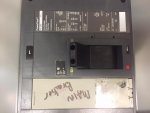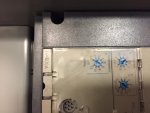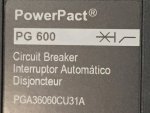Ravenvalor
Senior Member
- Location
- Piedmont region of NC
Hello,
On Saturday at about 10:00AM a restaurant customer of mine called and reported to me that a 600-amp, 208-volt breaker had tripped. They immediately turned it back on without any problem. It feeds a panel that feeds 7 - AC condensing units, a lighting panel, a dishwasher booster heater and a toaster conveyor. I went to the restaurant and measured the current at the breaker and it was only A-100-amps, B-150-amps, and C-200-amps (per each leg). The breaker is only 11 years old. I checked the AC units with the HVAC tech and we found nothing. I noticed that the trip settings were rather low on this breaker though. Two of the three were set all the way down to minimum. Could these low settings help explain why the breaker tripped?
Thank you,
On Saturday at about 10:00AM a restaurant customer of mine called and reported to me that a 600-amp, 208-volt breaker had tripped. They immediately turned it back on without any problem. It feeds a panel that feeds 7 - AC condensing units, a lighting panel, a dishwasher booster heater and a toaster conveyor. I went to the restaurant and measured the current at the breaker and it was only A-100-amps, B-150-amps, and C-200-amps (per each leg). The breaker is only 11 years old. I checked the AC units with the HVAC tech and we found nothing. I noticed that the trip settings were rather low on this breaker though. Two of the three were set all the way down to minimum. Could these low settings help explain why the breaker tripped?
Thank you,



